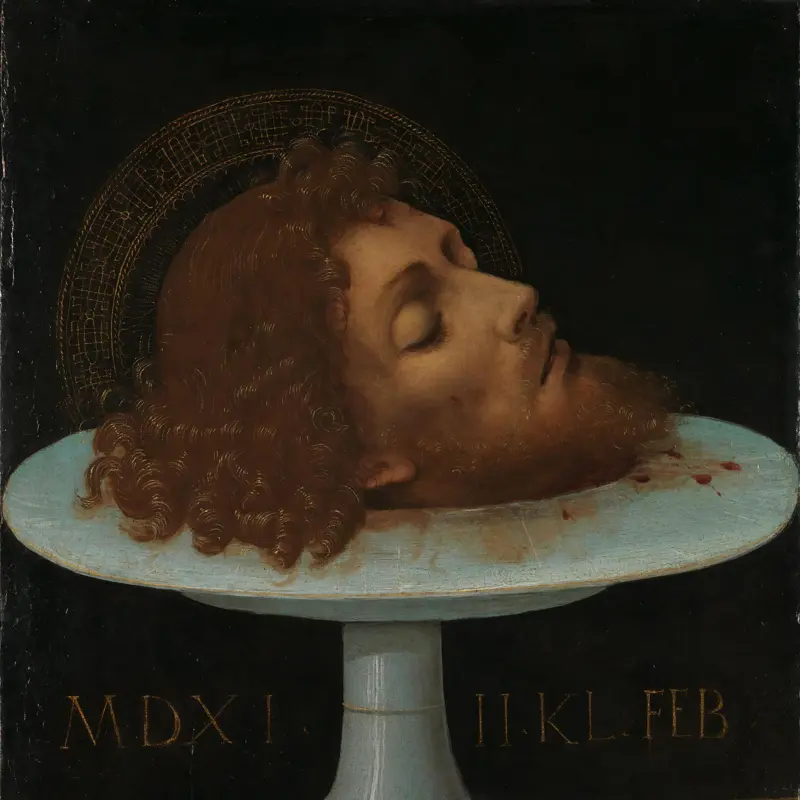Italian, 'The Dead Christ supported by Angels', late 16th century
About the work
Overview
The dead Christ, wearing the crown of thorns and displaying his wounds from the Crucifixion, is supported by two angels. One of them gazes at him while the other looks at us for our response. The figures fill the entire image, focusing our whole attention on the body of Christ, his wounds and his suffering.
The atmosphere is one of intense emotion, emphasised by the restricted dark space, the elongated slender figures and the tightly cropped composition. Displayed above an altar, the image would have reinforced the direct connection between the bread and wine of the Communion and the physical body of Christ, as well as giving the impression of Christ being raised from his tomb, just as those receiving the sacrament will rise from the dead on Judgement Day.
The painting may be by an unknown sixteenth-century Lombard artist known as the Master of the Stockholm Pietà, who was influenced by the Sienese artist Sodoma and the Milanese works of Leonardo.
Key facts
Details
- Full title
- The Dead Christ supported by Angels
- Artist
- Italian
- Date made
- Late 16th century
- Medium and support
- Oil on wood
- Dimensions
- 62.2 × 46.7 cm
- Acquisition credit
- Presented by Sir Walter Calverley Trevelyan, 1849
- Inventory number
- NG219
- Location
- Not on display
- Collection
- Main Collection
- Previous owners
Provenance
Additional information
Text extracted from the ‘Provenance’ section of the catalogue entry in Cecil Gould, ‘National Gallery Catalogues: The Sixteenth Century Italian Schools’, London 1987; for further information, see the full catalogue entry.
Bibliography
-
1962Gould, Cecil, National Gallery Catalogues: The Sixteenth Century Italian Schools (excluding the Venetian), London 1962
-
1987Gould, Cecil, National Gallery Catalogues: The Sixteenth Century Italian Schools, London 1987
-
2001
C. Baker and T. Henry, The National Gallery: Complete Illustrated Catalogue, London 2001
About this record
If you know more about this work or have spotted an error, please contact us. Please note that exhibition histories are listed from 2009 onwards. Bibliographies may not be complete; more comprehensive information is available in the National Gallery Library.















